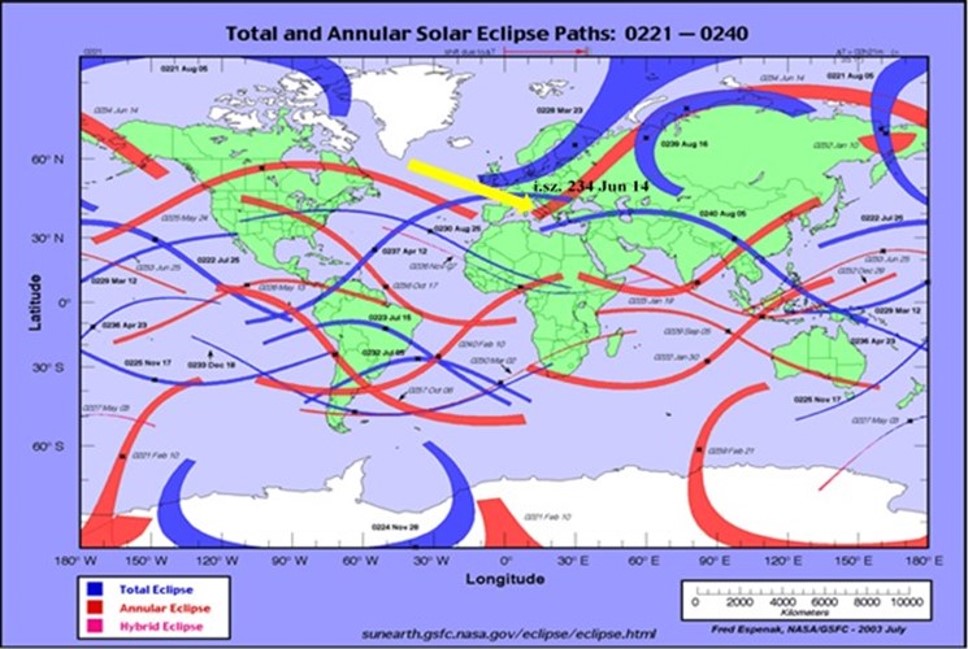
According to legends and to Eusebius (a great historian from Caesarea who lived relatively close to the time of Augustus), the emperor’s death was “foretold” shortly before by a solar eclipse.
For us today, Emperor Augustus died on 19 August AD14.
This date is one of the milestones of the modern historical chronology. However, there was no solar eclipse in Italy near AD14 at all! This fact indicates that AD14 can hardly be considered the year of Emperor Augustus' death.
Let us see what astronomy tells us about the year 220 years later.
The 220-years forwards transformed year of Augustus’ death is the 234CE. Just nine weeks before 19 August 234CE, on 14 June 234CE, there was a powerful partial annular solar eclipse crossing the Apennine peninsula.
Solar eclipses are listed in the “FIVE MILLENNIUM CATALOG OF SOLAR ECLIPSES” of NASA.
This eclipse can also be seen on a map published by NASA.
See the red curve at the top right. The yellow arrow is a highlight by the blogger.

This solar eclipse was well-visible at sunrise from Rome and Nola near Naples, where Augustus died. The eclipse lasted for a very long time, and such long-time solar eclipses infrequently occur, so it was sure memorised commonly.

This eclipse was indeed symbolic:
The Moon, the symbol of the weaker deity Diana, slowly overtook the Sun and “prevented the rising” of the Sun, the symbol of the greater god Sol, for more than 3.5 minutes!
Afterwards, this eclipse remained very well observable for further 58 minutes.
The Sun also symbolised the divine emperor Augustus who was “defeated” by the disease, symbolized by the minor deity, the Moon!
Do not miss seeing the video clip of this beautiful solar eclipse:
Our suggested new date of the death of Emperor Augustus is 19 August 234CE.
Of course, the symbolic connection between a given solar eclipse and the death of somebody can only be created shortly after the death of the given person. A solar eclipse would hardly have been invented after the fact if the eclipse had not taken place indeed somewhat before Augustus’ death. It seems likely that such a particularly long solar eclipse in connection with the death of the emperor Augustus is not without reason preserved in the general social memory and ancient literature.
The astronomical fact of the presented Solar Eclipse in 234CE in Rome and Nola and its use as a symbol are essential indications that 220 years of fictive historical events are embedded indeed in history and AD time reckoning.
